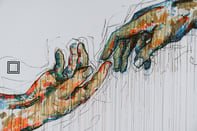Published on
Strengthening The Customer-Centered Organization
Rita Martinez-Purson | Dean of Continuing Education and Community Services, University of New Mexico

Leading organizations strategically manage relationships with customers in order to best identify changing needs, to improve quality and to strengthen public relations, enrollments and sales. If marketing is defined as a social process that enables ongoing exchanges with others, then relationship-building is crucial to our success as continuing education leaders. In the field of continuing education, we need to be most attentive to current and prospective students, our community, faculty, employees and other stakeholders who may support and impact our work.
A renewed emphasis on quality customer service has been driven home by the current recession. Now more than ever it is important to build ongoing student loyalty, as well as attract new students and clients. With strong branding, which is based on trust, we can bolster the relevance of our programs and services for our communities.
An Inside-Out Approach
The Division of Continuing Education at the University of New Mexico undertook a planning effort in 2009-10 to develop our organization as a customer-driven organization. Here we define customers as both internal and external to the organization.
Of course, we have long-recognized the external customer–our students, conference center clientele, and business and government agency contractors. In addition, we now acknowledge a priority to develop a culture of accountability for internal customers. Here, employees also recognize faculty, service providers, and one another as customers.
With a broader perspective and awareness of who the customer is at various levels of the service chain, we are positioned to hold accountability for both internal and external clientele. Whether faculty get paid on time, phone calls are returned promptly, marketing meets internal customer needs, or performance evaluations are done to quality standards—we see that processes such as these have reverberating effects on the whole system. This responsiveness of this system ultimately gives life to quality service for our students and clients. In order to be customer-driven, we need to work from the inside out.
Customer-Driven Mission Statement
Like other organizations, we have our vision and mission statements, but now have added a Customer Service Mission, with “Associated Behaviors,” which guides specific training and development:
“Our Customer Service Mission is to meet the needs of our diverse students and customers through professional, friendly and efficient service. We will earn the trust of those we serve by making informed decisions on customer needs, and exceed customer expectations through targeted, quality programs and services. We will communicate professionally, utilize proactive approaches to problem solving and provide leadership at all levels toward continuous quality improvement”
We have summarized this mission as “Customer-centered, solution-focused and data-driven.”
Actualizing the Mission
To serve this customer service mission, we created a list of 28 specific customer-centered behaviors grouped under the following five guidelines.
- We convey a professional and proactive attitude.
- We communicate professionally.
- We utilize proactive approaches to problem solving.
- We provide leadership toward continuous quality improvement.
- To continuously improve quality, we gather customer feedback to build our strengths and overcome our weaknesses.
As we engage in our annual strategic planning and year-round staff development efforts, we articulate specific actions to enable the organization and our staff to continuously improve.
Integral to this process are reviews of our customer service guidelines and survey data gathered from both internal and external customers. With a more focused and integrated approach, we are seeing measurable improvements in staff performance and higher customer satisfaction rates, now at an overall 98.5%.
Author Perspective: Administrator



